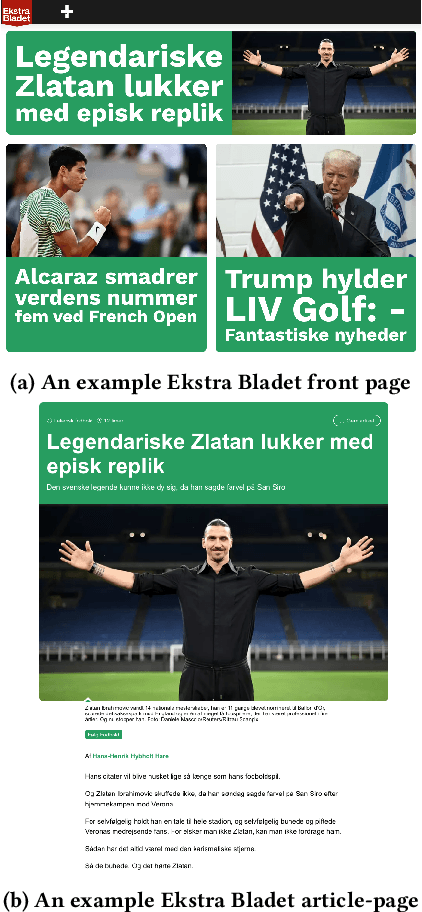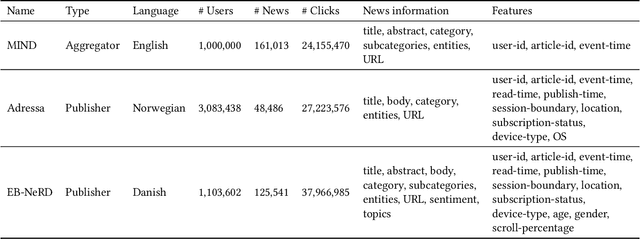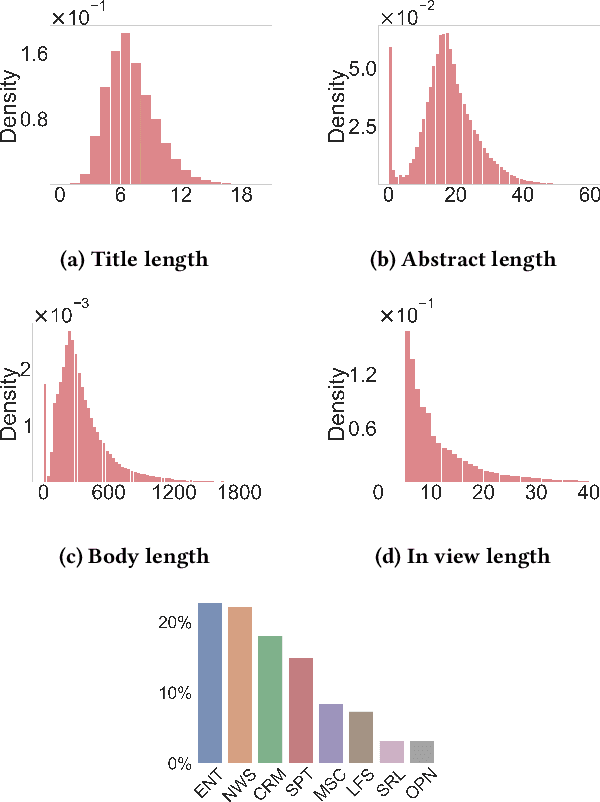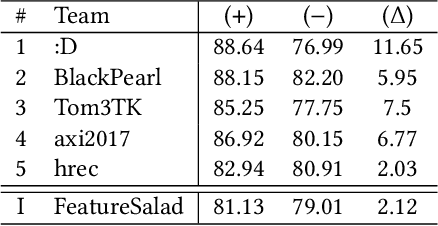Anshuk Uppal
EB-NeRD: A Large-Scale Dataset for News Recommendation
Oct 04, 2024



Abstract:Personalized content recommendations have been pivotal to the content experience in digital media from video streaming to social networks. However, several domain specific challenges have held back adoption of recommender systems in news publishing. To address these challenges, we introduce the Ekstra Bladet News Recommendation Dataset (EB-NeRD). The dataset encompasses data from over a million unique users and more than 37 million impression logs from Ekstra Bladet. It also includes a collection of over 125,000 Danish news articles, complete with titles, abstracts, bodies, and metadata, such as categories. EB-NeRD served as the benchmark dataset for the RecSys '24 Challenge, where it was demonstrated how the dataset can be used to address both technical and normative challenges in designing effective and responsible recommender systems for news publishing. The dataset is available at: https://recsys.eb.dk.
RecSys Challenge 2024: Balancing Accuracy and Editorial Values in News Recommendations
Sep 30, 2024


Abstract:The RecSys Challenge 2024 aims to advance news recommendation by addressing both the technical and normative challenges inherent in designing effective and responsible recommender systems for news publishing. This paper describes the challenge, including its objectives, problem setting, and the dataset provided by the Danish news publishers Ekstra Bladet and JP/Politikens Media Group ("Ekstra Bladet"). The challenge explores the unique aspects of news recommendation, such as modeling user preferences based on behavior, accounting for the influence of the news agenda on user interests, and managing the rapid decay of news items. Additionally, the challenge embraces normative complexities, investigating the effects of recommender systems on news flow and their alignment with editorial values. We summarize the challenge setup, dataset characteristics, and evaluation metrics. Finally, we announce the winners and highlight their contributions. The dataset is available at: https://recsys.eb.dk.
Implicit Variational Inference for High-Dimensional Posteriors
Oct 10, 2023



Abstract:In variational inference, the benefits of Bayesian models rely on accurately capturing the true posterior distribution. We propose using neural samplers that specify implicit distributions, which are well-suited for approximating complex multimodal and correlated posteriors in high-dimensional spaces. Our approach advances inference using implicit distributions by introducing novel bounds that come about by locally linearising the neural sampler. This is distinct from existing methods that rely on additional discriminator networks and unstable adversarial objectives. Furthermore, we present a new sampler architecture that, for the first time, enables implicit distributions over millions of latent variables, addressing computational concerns by using differentiable numerical approximations. Our empirical analysis indicates our method is capable of recovering correlations across layers in large Bayesian neural networks, a property that is crucial for a network's performance but notoriously challenging to achieve. To the best of our knowledge, no other method has been shown to accomplish this task for such large models. Through experiments in downstream tasks, we demonstrate that our expressive posteriors outperform state-of-the-art uncertainty quantification methods, validating the effectiveness of our training algorithm and the quality of the learned implicit approximation.
 Add to Chrome
Add to Chrome Add to Firefox
Add to Firefox Add to Edge
Add to Edge